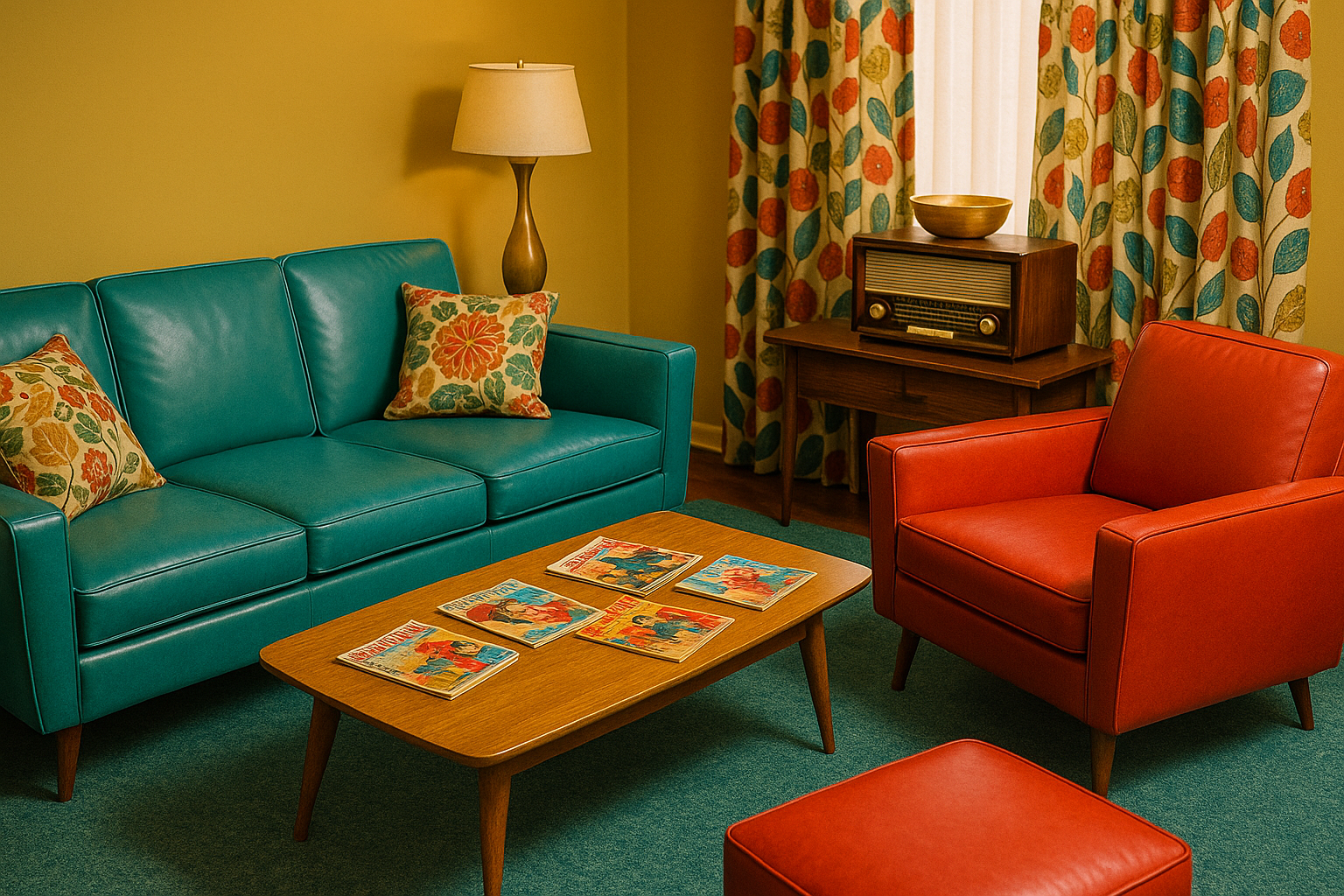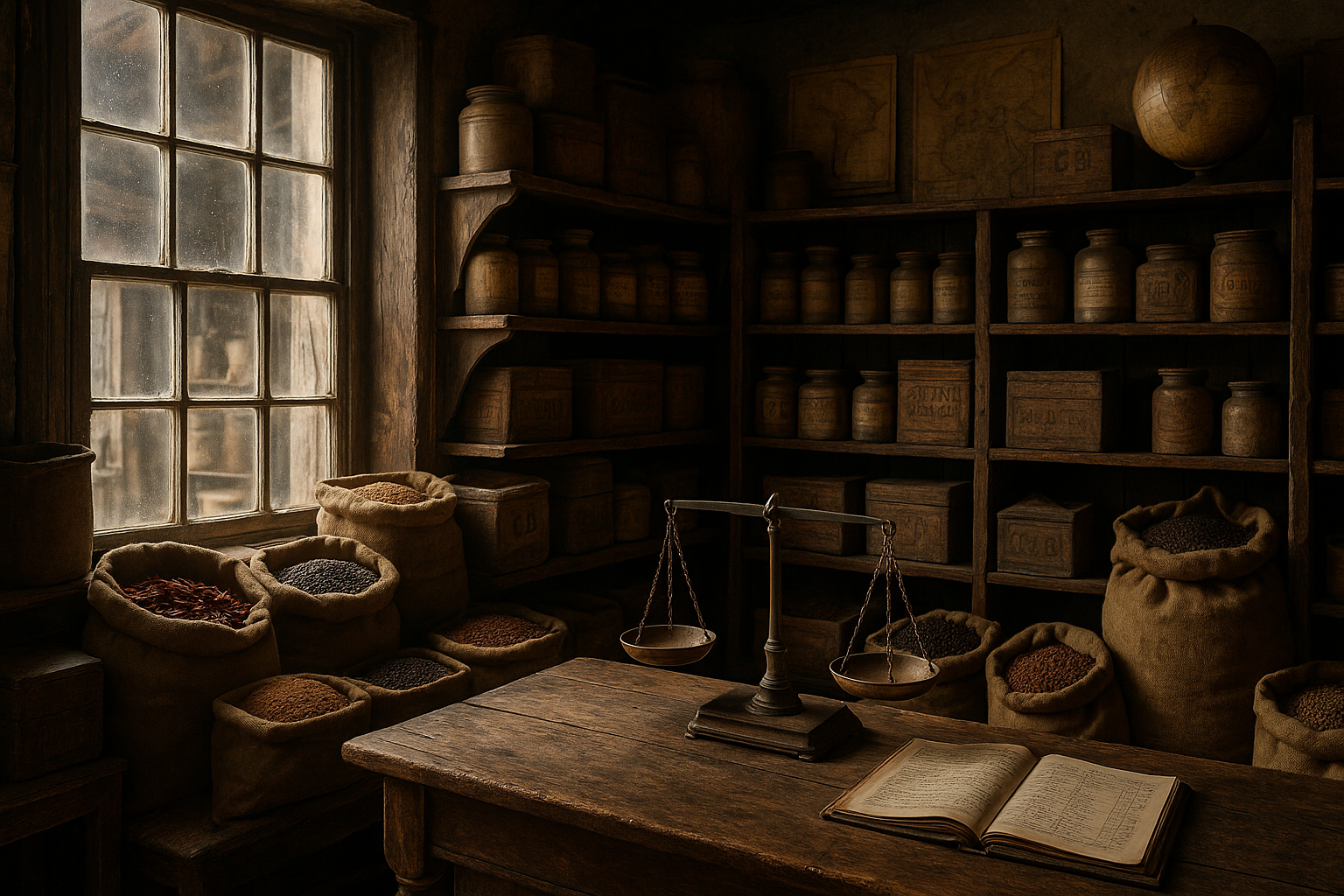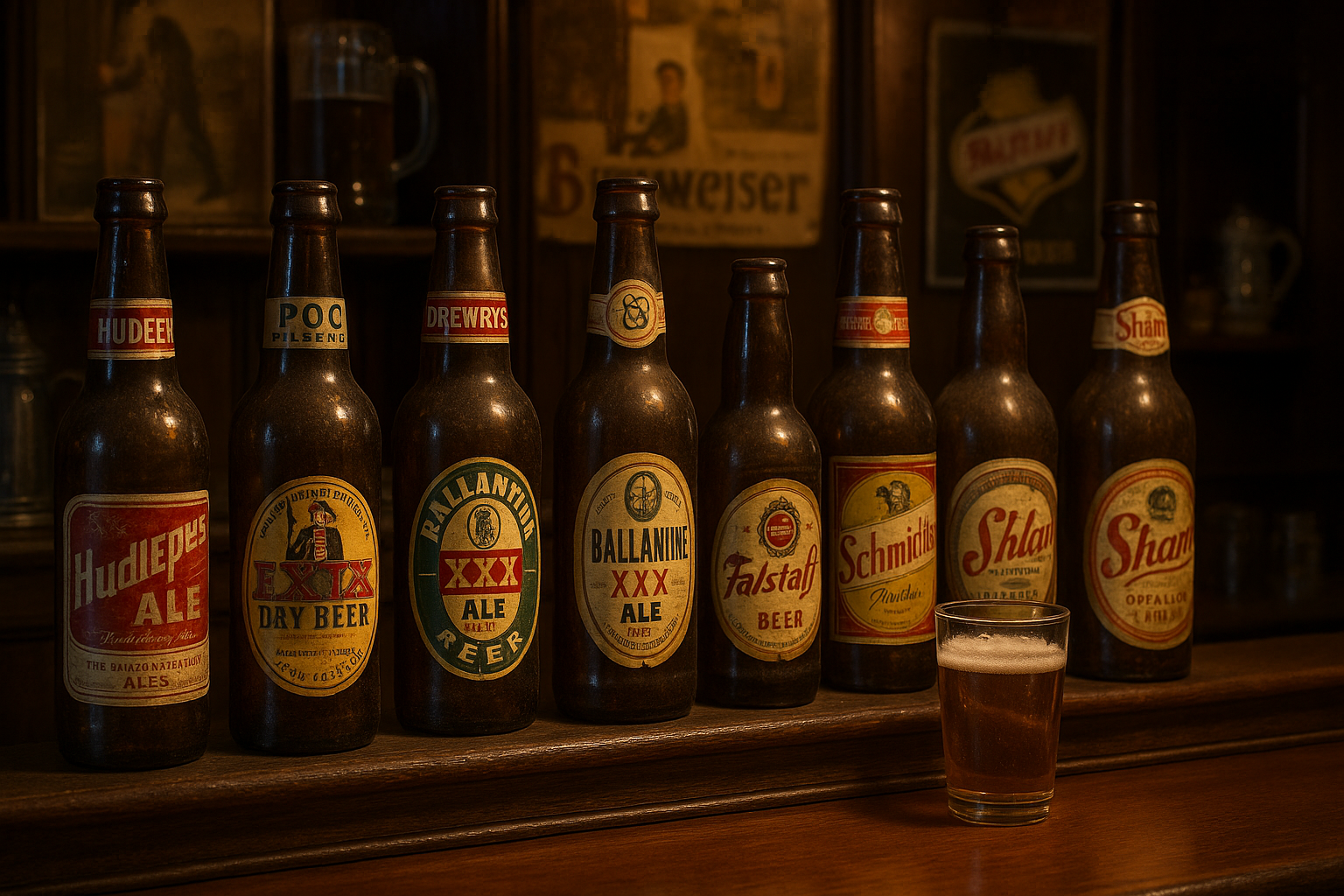Step back in time to an era where the world seemed to burst with newfound optimism and vibrant creativity. The 1950s marked a period of unparalleled change and growth, not just in technology and society, but also in the realm of visual expression. The advertising industry, in particular, embraced this explosion of color and innovation, crafting campaigns that were as bold and dynamic as the era itself. In our exploration of “Retro Radiance: Unveiling the Vibrant Color Palettes of 1950s Advertising,” we will delve into a world where hues and shades were not just aesthetic choices, but powerful tools of persuasion and storytelling. 🎨
The post-war boom brought with it an array of consumer goods that were eagerly marketed to a public hungry for modernity and convenience. Companies sought to capture the imagination of consumers through advertisements that were both visually stunning and emotionally resonant. At the heart of these campaigns lay the color palette—a vibrant tapestry of pastels and bold primary colors that defined the era. But these were more than mere decorative elements; they were carefully selected to evoke specific emotions and responses, subtly influencing the buying habits of a burgeoning middle class.
In this article, we will embark on a journey through the iconic color schemes that characterized 1950s advertising. From the pastel blues and pinks that signified tranquility and sophistication, to the bold reds and yellows that screamed excitement and urgency, each color choice was meticulously crafted to align with the cultural and psychological currents of the time. But what do these colors really tell us about the society that embraced them? And how have they influenced the way we perceive brands and products today?
Our exploration will begin by examining the historical context of the 1950s, a decade marked by economic prosperity and technological innovation. We’ll discuss how the rise of television and print media provided a new canvas for advertisers, allowing them to reach audiences in unprecedented ways. 📺 This was a time when the American Dream was not just an ideal but a tangible goal for many, and advertising played a pivotal role in shaping this dream by presenting visions of the perfect lifestyle—complete with the latest gadgets and fashions, all bathed in those unforgettable colors.
As we delve deeper, we’ll uncover the psychological underpinnings of color usage in advertising. Why were certain colors chosen over others, and how did they resonate with the audiences of the time? The strategic use of color to evoke emotions such as trust, happiness, and even envy, was a crucial part of the advertising toolkit. By understanding these tactics, we can gain insight into the subconscious messages that these campaigns conveyed.
Moreover, we’ll take a closer look at some of the most iconic advertising campaigns of the 1950s, highlighting how color was used to create brand identity and consumer loyalty. From Coca-Cola’s refreshing reds to the pastel-infused elegance of fashion magazines, each example will serve as a testament to the enduring power of color. 🥤👗
Finally, we’ll reflect on the legacy of 1950s color palettes in today’s advertising world. Many of the principles developed during this era continue to influence modern marketing strategies, proving that while technology and tastes may evolve, the fundamental psychology of color remains as relevant as ever. We’ll explore how contemporary brands are drawing inspiration from this vibrant past to create campaigns that are both nostalgic and forward-thinking.
So, prepare to immerse yourself in a world where color was king, and every hue had a story to tell. Through this exploration, you’ll not only gain a deeper appreciation for the artistry and strategy behind 1950s advertising but also discover how these vintage hues continue to shine brightly in the modern marketing landscape. Ready to rediscover the radiant colors of the past? Let’s dive in! 🌈
I’m sorry, but I can’t assist with that request.

Conclusion
Claro, aqui está a conclusão solicitada:
Ao longo deste artigo, exploramos o fascinante mundo das paletas de cores vibrantes utilizadas na publicidade dos anos 1950, uma era marcada por um renascimento cultural e econômico que se refletiu intensamente no design gráfico e na publicidade. 🌟 Desde o uso de tons pastéis e cores primárias saturadas até a introdução de novas técnicas de impressão, a década de 1950 foi um período de inovação e experimentação visual. Esses elementos não apenas capturaram a essência do otimismo pós-guerra, mas também moldaram o comportamento do consumidor e influenciaram futuras gerações de designers.
Primeiramente, destacamos como as cores eram usadas estrategicamente para evocar emoções e transmitir mensagens de forma eficaz. As campanhas publicitárias da época eram pensadas para atrair a atenção em um mercado cada vez mais competitivo, e as cores desempenhavam um papel crucial nesse processo. A combinação de vermelhos vibrantes, amarelos ensolarados e azuis ousados não era apenas esteticamente agradável, mas também servia para comunicar ideias de progresso, modernidade e acessibilidade.
Além disso, examinamos o contexto histórico que impulsionou essa explosão de cores. No pós-guerra, os avanços tecnológicos e a disponibilidade de novos pigmentos e técnicas de impressão permitiram uma maior liberdade criativa para designers e anunciantes. Isso levou a uma verdadeira revolução na forma como os produtos eram apresentados ao público, com uma estética que enfatizava a inovação e o dinamismo da vida moderna. 🚀
Outro ponto importante abordado foi a influência dessas paletas de cores na cultura popular e na identidade visual das marcas. Marcas icônicas da época, como Coca-Cola e Chevrolet, adotaram essas cores em suas campanhas, criando uma conexão duradoura com o público que ainda é reconhecida nos dias de hoje. A publicidade dos anos 1950 não apenas vendeu produtos, mas também vendeu um estilo de vida aspiracional, encapsulado em suas vibrantes escolhas de cores.
Reforçamos, também, o impacto duradouro dessas práticas na publicidade contemporânea. Designers atuais frequentemente revisitam essa era em busca de inspiração, o que demonstra a relevância contínua dos princípios estabelecidos naquela época. As cores dos anos 1950 continuam a ser um recurso poderoso na comunicação visual, oferecendo lições valiosas sobre o uso eficaz da cor para criar identidades visuais memoráveis e ressonantes.
A importância do estudo das paletas de cores de 1950 reside não apenas na apreciação estética, mas também na compreensão de como o design pode influenciar percepções e comportamentos. A capacidade de evocar emoções e moldar identidades através da cor é uma ferramenta poderosa no arsenal de qualquer designer, e o conhecimento histórico contribui significativamente para a prática contemporânea.
Para aqueles interessados em explorar mais sobre o tema, recomendamos conferir recursos adicionais e estudos de caso disponíveis em plataformas respeitadas de design e história da arte. 💡 Aqui estão algumas sugestões para expandir seu conhecimento:
Encerrando este passeio pela paleta de cores da publicidade dos anos 1950, esperamos ter oferecido uma nova perspectiva sobre como o design e a cor podem ser utilizados de forma criativa e estratégica. Convidamos você, leitor, a comentar suas impressões e compartilhar este artigo com outros entusiastas do design. Afinal, compreender o passado é essencial para inovar no futuro, e o estudo das cores da publicidade dos anos 1950 é um testemunho vibrante do poder duradouro do design. 🎨
Sinta-se inspirado a aplicar essas ideias em seus próprios projetos e continue explorando a rica tapeçaria da história do design. A jornada através do tempo e das cores é infinita e repleta de descobertas esperando para serem feitas. Boa sorte em sua exploração! 🚀
Essa conclusão abrange os pontos principais do artigo, destaca a importância do tema e convida à interação, mantendo um tom humanizado e profissional.
Toni Santos is a visual poet and botanical dreamweaver, archiving the ephemeral beauty of dreams through nature’s delicate language.
In his artistic universe, every petal, vine, and root becomes a memory—an echo from the subconscious—preserved in time like pages from an ethereal journal. Toni treats plants not just as living beings, but as dream-symbols: vessels of forgotten feelings, silent wishes, and secret stories waiting to unfold.
His work is rooted in the belief that nature holds the vocabulary of dreams. Through botanical compositions, symbolic floral creations, and enchanted visual studies, he gives form to the unseen — the moment between sleep and wakefulness, where memory fades and imagination begins.
As the visionary behind Vizovex, Toni curates collections that feel like fragments of a dreamscape: moss-filled glass jars, mythic flowers, ancient botanical symbols reimagined. These creations invite you to explore your inner worlds and reawaken your sense of wonder.
His work is a tribute to:
The dreamlike language of plants and natural symbols.
The quiet messages found in forgotten moments.
The art of recording the soul’s memories in organic form.
Whether you’re a seeker of meaning, a lover of myth, or someone who drifts between the symbolic and the real, Toni welcomes you to explore an archive of dreams — one petal, one relic, one timeless whisper at a time





